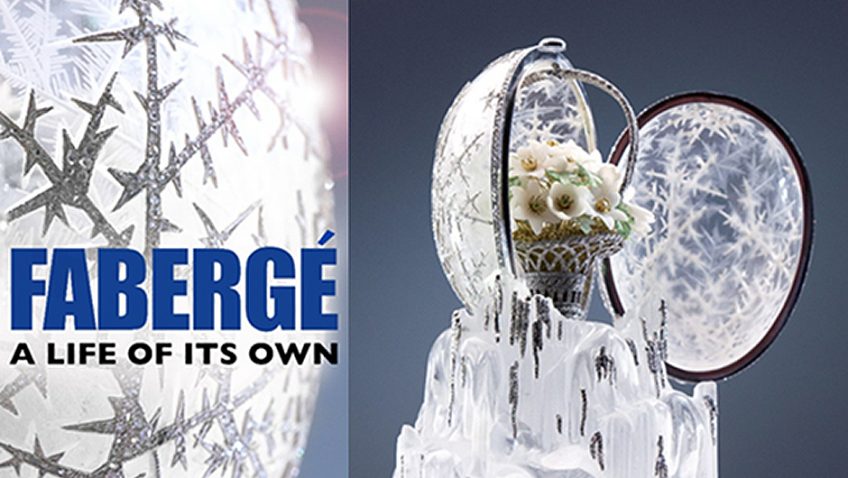Joyce Glasser reviews Fabergé: A Life of Its Own (DVD, Blu-Ray
, iTunes and On Demand Release from April 10)
Writer/Director Patrick Mark’s documentary, Fabergé: A Life of Its Own, is released to coincide with Easter, of course, for there is no egg more famous (or more valuable) than the Fabergé Egg.
But all things Russian are the rage this year, as we commemorate the Russian Revolution – if not its politics, then its art. While the Royal Academy’s Russian Revolution exhibit is coming to an end, the Design Museum’s excellent ‘Imagine Moscow’ exhibit is still going strong and the British Library’s mega exhibit is still to come at the end of the month.
One casualty of the Revolution is the famous Fabergé jewelled egg, made between 1885 and 1917 under the direct supervision of Peter Carl Fabergé. The eggs became the gift de rigueur for royalty during this period as no one else could afford them. The Russian Tsars Alexander III and Nicholas II gave them to their wives and mothers for Easter. Two eggs were ordered, but never delivered, as the Romanovs were in jail and soon to be executed.
Since European royalty was all related at the time, Her Majesty the Queen has inherited a few eggs. A selection of the imperial eggs that are in private collections will be revealed in the documentary for the first time. The film culminates with what is generally perceived as the most spectacular Fabergé item to ever be produced – The Winter Egg of 1913.
When the St Petersburg (Leningrad) workshop was nationalised by the Bolsheviks in 1918, the Fabergé family left Russia, but that was not the end of their story. The documentary shows you the magnificent eggs and tells you the story of these unique and iconic jewels, born of the marriage of art, craftsmanship and extreme wealth.
100 years after the Russian Revolution, the world’s most valuable Easter egg is revealed on film from 10 April
You can watch the film trailer here:





